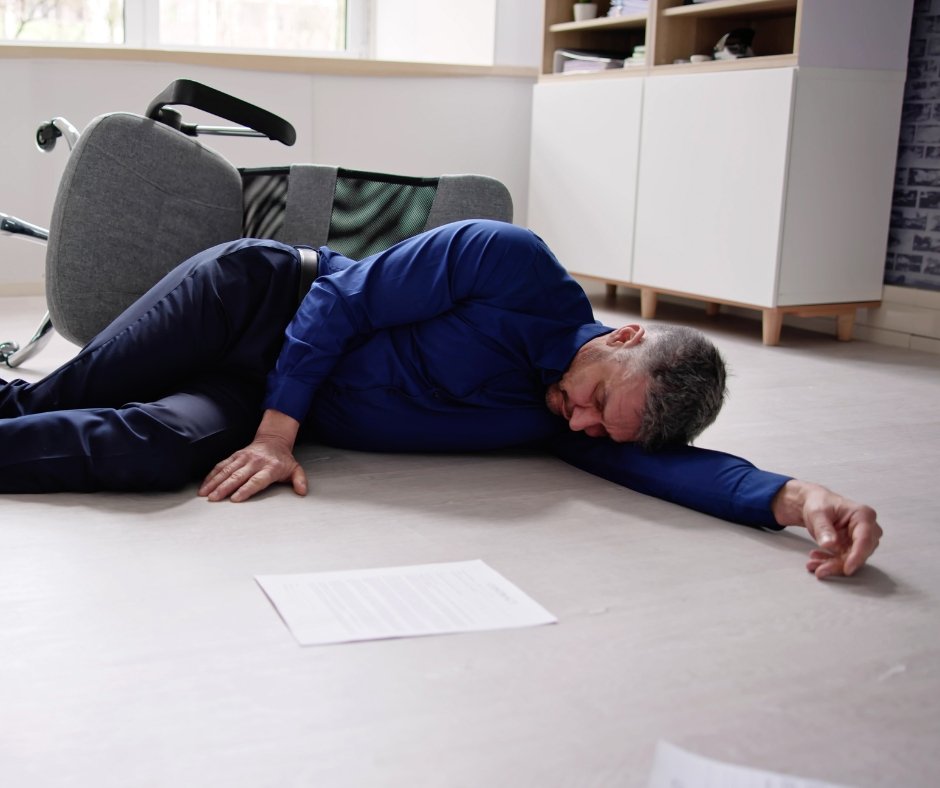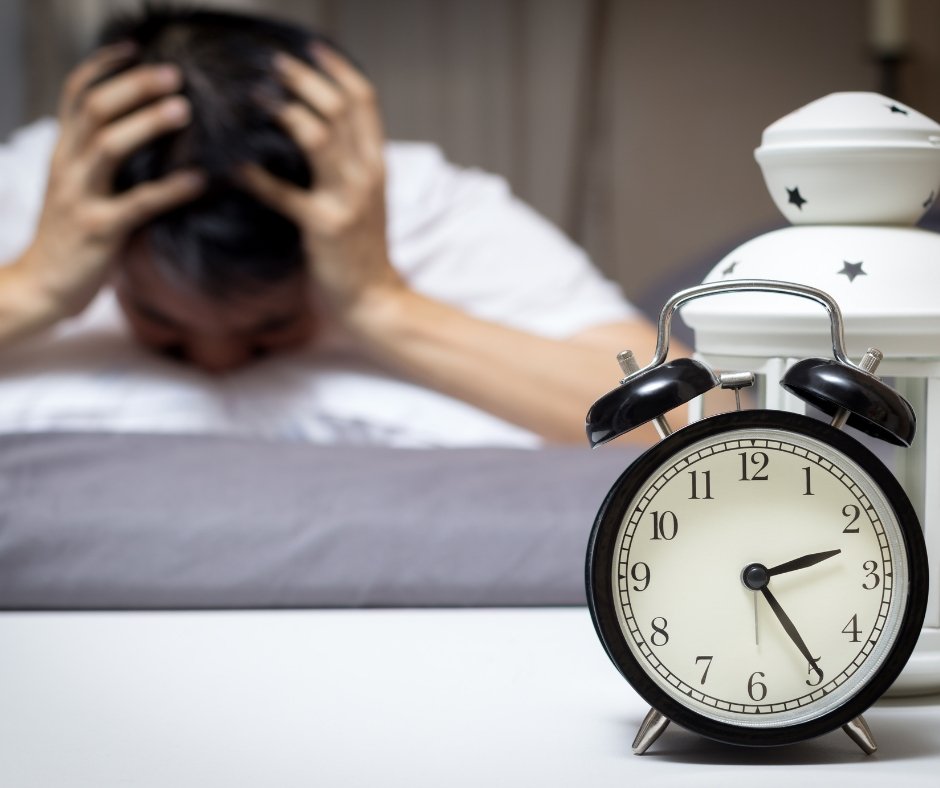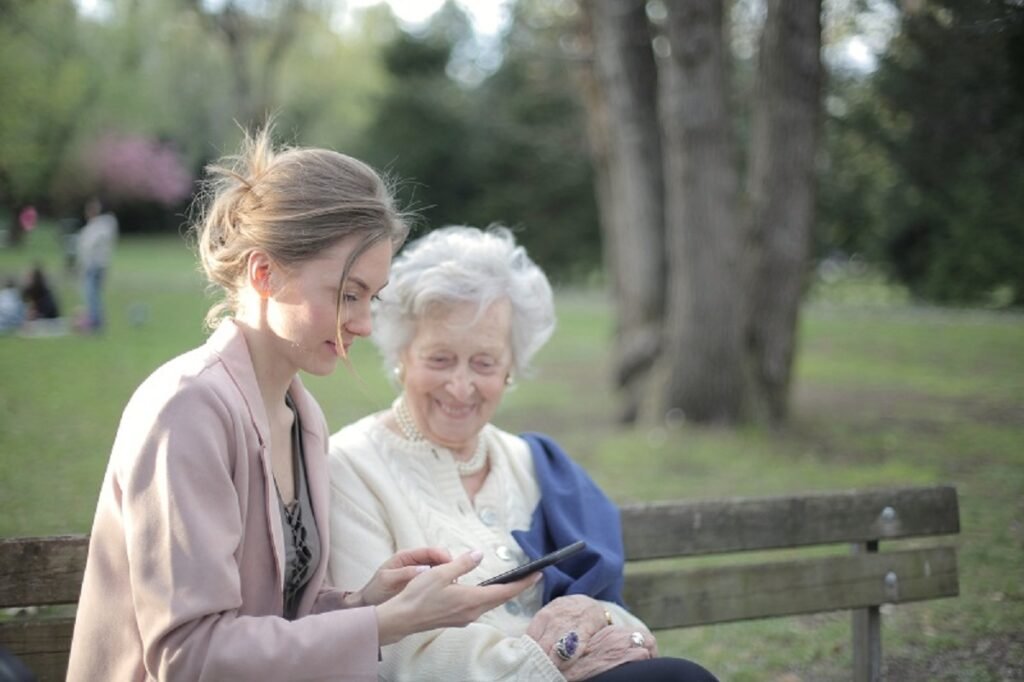Fatigue in Older Adults: Causes, Symptoms, and Effective Management Strategies

Last Updated on August 13, 2025 by Rose Ann
Fatigue is more than just feeling tired — for many older adults, it can be a persistent, life-disrupting condition that affects physical health, mental well-being, and overall quality of life. As we age, our bodies change, and so does the way we experience energy and exhaustion. While occasional tiredness is normal, chronic fatigue in older adults often points to deeper underlying health issues that need attention and tailored care.
This comprehensive guide explains what fatigue is, why it is common in later life, how to recognize it, and the most effective ways to manage and prevent it. Whether you’re an older adult, a family member, or a caregiver, understanding fatigue in older adults is the first step toward reclaiming energy and vitality.
Understanding Fatigue in Older Adults
Fatigue is a prolonged state of physical or mental exhaustion that isn’t relieved by typical rest. Unlike simple sleepiness, it can persist for weeks or months and may interfere with daily tasks such as cooking, walking, or socializing. People often describe it as “heavy-limbed,” “drained,” or “unable to get going,” and it can show up even when someone is sleeping an appropriate number of hours.
In older adults, fatigue can have wide-ranging effects. It is associated with decreased mobility and physical performance, a higher risk of falls, increased frailty, and reduced independence. It can worsen memory and attention, heighten feelings of depression or anxiety, and complicate the management of chronic conditions like diabetes or heart disease.
Left unaddressed, fatigue may also lead to social withdrawal, which can further worsen mood and overall health.

Fatigue vs. Sleepiness vs. Weakness
It helps to distinguish fatigue from similar but distinct sensations. Sleepiness typically improves with rest and is tied to insufficient or poor-quality sleep. Weakness refers to a loss of muscle strength or power. Fatigue, however, is a subjective lack of energy that can coexist with adequate sleep and normal muscle strength. In practice, older adults can experience all three at once, which makes careful evaluation important.
Common Causes of Fatigue in Older Adults
There is rarely a single cause of fatigue in older adults. Instead, it usually results from a combination of medical, psychological, and lifestyle factors. Understanding these contributors is central to effective treatment.
Medical Conditions Linked to Fatigue
- Cardiovascular disease: Heart failure, coronary artery disease, and arrhythmias can limit the heart’s ability to deliver oxygen-rich blood. Even light activities may feel exhausting as the body struggles to meet oxygen demands. Shortness of breath, swelling in the legs, or chest pressure may accompany fatigue.
- Pulmonary disease: Chronic obstructive pulmonary disease (COPD), asthma, and interstitial lung diseases reduce oxygen exchange in the lungs, leading to exertional fatigue. People may report fatigue alongside coughing, wheezing, or breathlessness with mild effort.
- Endocrine and metabolic disorders: Diabetes, thyroid disorders (especially hypothyroidism), adrenal insufficiency, and electrolyte imbalances often contribute to fatigue. Blood sugar swings in diabetes can sap energy, and hypothyroidism commonly causes sluggishness, weight gain, and cold intolerance.
- Anemia and nutritional deficiencies: Low iron, vitamin B12, or folate reduce oxygen-carrying capacity or impair nerve function. People may feel weak, lightheaded, or “foggy.” In older adults, vitamin D deficiency is also common and can contribute to muscle weakness and low mood.
- Chronic kidney or liver disease: Toxin buildup, inflammation, and nutritional issues related to organ dysfunction can produce persistent fatigue, reduced appetite, and sleep disturbances.
- Infections and inflammation: Even mild infections (urinary tract infections, dental infections, chronic sinusitis) can trigger disproportionate fatigue in older adults. Chronic inflammatory conditions like rheumatoid arthritis or polymyalgia rheumatica are also frequent culprits.
- Cancer and cancer treatments: Fatigue is among the most common and distressing symptoms in cancer and may persist after treatment due to anemia, inflammation, deconditioning, or medication effects.
- Neurologic disorders: Parkinson’s disease, stroke, multiple sclerosis, and peripheral neuropathies can increase energy expenditure for movement, amplify sleep disturbances, and worsen fatigue.
Medication Side Effects and Polypharmacy
Medications are a frequent, under-recognized driver of fatigue in older adults. Drugs that commonly contribute include certain blood pressure medications (beta blockers), sedatives and sleep aids (benzodiazepines, “Z-drugs”), antihistamines, some antidepressants or antipsychotics, opioids, and muscle relaxants. Polypharmacy — taking multiple medications — increases the risk of interactions that amplify fatigue. A comprehensive medication review can be transformative.

Sleep Disorders
Sleep apnea (often underdiagnosed), restless legs syndrome, periodic limb movement disorder, circadian rhythm disruptions, and insomnia all degrade restorative sleep. In older adults, pain, frequent urination, and reflux may further interrupt sleep.
Mental Health and Social Factors
Depression and anxiety can both cause and result from fatigue. Social isolation, bereavement, loneliness, and caregiver stress all correlate with lower energy. Cognitive decline may lead to inactivity, which in turn worsens fatigue through deconditioning.
Lifestyle and Environmental Contributors
Poor diet quality, inadequate protein, dehydration, physical inactivity, excessive alcohol, and low exposure to daylight can drain energy. Environmental factors such as cluttered homes, poor lighting, or temperature extremes force the body to work harder for daily tasks.
Recognizing the Symptoms of Fatigue
Fatigue in older adults often shows up as a cluster of physical, cognitive, and emotional signs rather than a single complaint.
- Physical indicators
- Persistent lack of energy even after sleep, shortness of breath with mild activity, muscle heaviness or weakness, slowed walking speed, poor endurance, and frequent need to sit or lie down.
- Cognitive changes
- Brain fog, slowed thinking, trouble concentrating, difficulty finding words, forgetfulness, and reduced problem-solving capacity, particularly later in the day.
- Emotional and behavioral signs
- Low motivation, irritability, mood swings, loss of interest in social activities, and increased napping or prolonged time in bed.
Because fatigue can mimic or mask other conditions, it’s important to note patterns: When is energy best or worst? What activities trigger crashes? Does rest help? These details guide diagnosis and treatment.
Risks and Complications of Untreated Fatigue
When fatigue persists, it can spiral into secondary problems. Reduced activity leads to muscle loss and deconditioning, which makes movement harder and increases fall risk. Social withdrawal contributes to depression and cognitive decline. Appetite may wane, causing unintentional weight loss and nutrient gaps. Over time, untreated fatigue erodes independence and quality of life.

When to See a Doctor
Seek medical evaluation if fatigue in older adults lasts longer than two weeks, significantly interferes with daily activities, or appears with red-flag symptoms such as chest pain, palpitations, fainting, unexplained weight loss, persistent fever, severe shortness of breath, new confusion, or blood in stool or urine. A prompt assessment can identify treatable causes and prevent complications.
Diagnosis and Medical Evaluation
Evaluating fatigue starts with a detailed history, including sleep patterns, diet, fluid intake, exercise habits, mood, stressors, and a full medication and supplement list. A physical exam looks for signs of anemia, thyroid problems, heart or lung issues, dehydration, infection, or neurologic changes.
Common diagnostic tests include basic bloodwork (complete blood count, thyroid-stimulating hormone, iron studies, vitamin B12 and folate, vitamin D), metabolic panels (glucose, electrolytes, kidney and liver function), inflammatory markers, and, if indicated, tests for infections.
Depending on symptoms, clinicians may order an EKG, echocardiogram, chest imaging, or pulmonary function tests. Sleep studies can uncover sleep apnea and related disorders. In some cases, depression and anxiety screening tools help capture mental health contributors.
Effective Management and Treatment Options
Because fatigue in older adults is often multifactorial, the most successful plans combine medical treatment for underlying causes with practical lifestyle strategies that restore energy, resilience, and confidence.

Lifestyle Modifications That Make a Difference
- Balanced nutrition for steady energy: Emphasize nutrient-dense meals with lean proteins (fish, poultry, beans, eggs, tofu), high-fiber whole grains, and a variety of colorful fruits and vegetables. Adequate protein — commonly 1.0–1.2 grams per kilogram of body weight per day for many older adults — supports muscle mass and energy metabolism. Include healthy fats (olive oil, nuts, avocado) and consider small, frequent meals if large meals feel tiring. Address specific deficiencies like iron, B12, folate, and vitamin D as guided by lab results.
- Hydration habits: Even mild dehydration reduces alertness and increases fatigue. Aim for regular fluid intake through water, herbal teas, broths, and water-rich foods. Adjust for heart or kidney conditions as advised by a clinician. A simple rule is to sip throughout the day and monitor urine color for hydration status.
- Sleep hygiene upgrades: Keep a consistent sleep and wake schedule, reserve the bed for sleep, limit caffeine after midday, and create a calming pre-sleep routine. Optimize the sleep environment with a cool, dark, quiet bedroom and supportive mattress and pillows. If nocturia disrupts sleep, consider limiting fluids late evening and discussing bladder management strategies with a clinician.
- Gentle, regular movement: Paradoxically, appropriately dosed activity is one of the best treatments for fatigue. Start low and go slow, especially after illness or inactivity. Helpful options include walking, water aerobics, tai chi, light resistance training with bands or light weights, and flexibility or balance exercises. Even two- to five-minute movement “snacks” every hour can accumulate meaningful benefits. The goal is consistency, not intensity.
- Pacing and energy conservation: Use the “4 Ps” — Plan, Prioritize, Pace, and Position. Break tasks into smaller steps, alternate activity with rest, sit when possible during chores, and schedule demanding activities at peak energy times. Assistive devices and ergonomic tools (grabbers, rolling carts, shower chairs) reduce energy expenditure.
- Daylight and routine: Morning light exposure helps set circadian rhythms and improve daytime alertness. A predictable daily routine with structured activities can stabilize energy patterns.
- Mind-body strategies: Mindfulness meditation, breathing exercises, guided imagery, or gentle yoga can lower stress and improve perceived energy. Short, regular practice sessions are often more sustainable than long ones.
Medical Treatments and Adjustments
- Address underlying conditions: Treating heart, lung, endocrine, renal, or hepatic issues often improves fatigue. For anemia, therapy depends on the cause — iron for iron deficiency, B12 injections or high-dose oral therapy for pernicious anemia, or other targeted treatments.
- Optimize medications: A medication review may identify sedating or duplicative drugs that can be tapered or replaced. Never stop a prescribed medication without discussing it with your healthcare provider. Sometimes changing the dose timing (e.g., taking sedating meds at night) helps.
- Manage sleep disorders: If sleep apnea is confirmed, continuous positive airway pressure (CPAP) or alternative therapies can significantly boost daytime energy. For restless legs, correcting iron deficiency and evidence-based medications may help. Cognitive behavioral therapy for insomnia (CBT-I) is highly effective and avoids the pitfalls of sedative use.
- Treat mood disorders: Evidence-based therapies for depression and anxiety — including psychotherapy, behavioral activation, and, when appropriate, antidepressant medication — often yield substantial gains in energy and function.
- Supplements: Only use supplements with guidance from a clinician, especially given potential interactions. Commonly considered options include vitamin D, B12, iron (if deficient), magnesium (for sleep or muscle cramps), and omega-3s. Be cautious with stimulant-like supplements or those promising quick energy boosts.
Complementary and Alternative Therapies
- Massage therapy may reduce muscle tension, improve circulation, and enhance relaxation.
- Acupuncture has shown benefits for some people with pain-related or stress-related fatigue.
- Tai chi and qigong blend gentle movement with breath and focus, improving balance, mood, and perceived energy.
- Mindfulness-based stress reduction programs can lower fatigue related to stress and illness.

Preventing Fatigue in Older Adults
Prevention focuses on maintaining resilience and addressing small problems early so they don’t snowball into persistent fatigue.
- Regular health screenings and follow-ups: Keep up with preventive care, vaccinations, dental visits, vision and hearing checks, and routine labs to detect issues like anemia or thyroid problems early.
- Smart stress management: Build a personal stress toolkit: paced breathing, brief mindfulness breaks, journaling to process emotions, and reaching out to social supports. Limit news or social media exposure if it increases stress.
- Social engagement and cognitive stimulation: Conversations, volunteering, clubs, faith communities, or taking classes provide purpose and mental stimulation that can boost energy. Even short, meaningful interactions help.
- Safe and supportive environments: Good lighting, uncluttered walkways, grab bars in bathrooms, non-slip mats, and reachable storage reduce physical strain and fall risk, preserving energy for what matters most.
Living Well with Chronic Fatigue
Even when fatigue is chronic, many people make meaningful improvements with structured routines, realistic goals, and support.
- Build a personalized energy plan: Track energy levels across the day for one to two weeks to identify patterns. Schedule high-energy tasks when you typically feel best. Insert regular rest intervals before exhaustion hits.
- Use assistive devices confidently: Canes, walkers, shower chairs, reachers, and raised toilet seats aren’t signs of weakness; they are tools that conserve energy and improve safety.
- Leverage your care team: Primary care clinicians, geriatricians, physical and occupational therapists, dietitians, sleep specialists, and mental health professionals each play a role. Coordinated care is especially valuable for complex cases.
- Caregiver tips: Encourage pacing, help with planning meals and appointments, and celebrate small wins. Watch for signs of depression or rapid functional decline and seek timely help. Caregivers also need rest and respite to sustain their own well-being.
A Sample Gentle Weekly Activity Framework
Consider a flexible framework rather than a rigid plan, adjusting intensity based on how you feel each day. For example, aim for brief daily walks (5–15 minutes as tolerated), two or three short resistance sessions per week focusing on large muscle groups, daily balance practice (heel-to-toe walks, single-leg stands near a counter), and light stretching on most days. Sprinkle in social or creative activities you enjoy, and protect a consistent wind-down routine before bedtime. Small steps compound.

Practical, Quick-Start Checklist
- Book a checkup to evaluate medical, sleep, and medication factors.
- Start a simple energy journal to track patterns.
- Add two extra glasses of water per day unless you have fluid restrictions.
- Incorporate a 5–10 minute walk or gentle movement twice daily.
- Eat protein with each meal and include colorful produce.
- Set a consistent bedtime and wind-down routine.
- Schedule one enjoyable social activity this week.
- Choose one small home adaptation that will make daily life easier.
Taking Steps Toward Vitality
Fatigue in older adults is common but not inevitable. With the right evaluation and a personalized plan that blends medical care, smart lifestyle adjustments, and supportive routines, many people regain energy, confidence, and independence.
Small steps — a medication review, better hydration, consistent gentle movement, improved sleep habits, and meaningful social contact — add up. If you or someone you care about is struggling with persistent fatigue, don’t accept it as “just aging.” The path to renewed vitality starts with a conversation and a plan tailored to you.
FAQs on Fatigue in Older Adults
- Is fatigue a normal part of aging?
- Mild tiredness may be common, especially after poor sleep or a busy day, but persistent fatigue is not an inevitable part of aging. Ongoing fatigue should be evaluated because it is often treatable.
- Can dehydration cause fatigue in seniors?
- Even mild dehydration can lead to low energy, dizziness, confusion, and headaches. Regular fluid intake throughout the day can make a noticeable difference.
- How much sleep should older adults get?
- Most older adults need about 7–8 hours of quality sleep per night. If you wake unrefreshed despite adequate time in bed, discuss sleep quality and possible sleep disorders with your clinician.
- Are naps helpful for reducing fatigue?
- Short, early afternoon naps of 20–30 minutes can boost alertness without disrupting nighttime sleep. Long or late naps may make it harder to fall asleep at night.
- Can poor diet cause fatigue?
- Absolutely. Insufficient protein, low iron, B12, or folate, and low overall calorie intake can all contribute to fatigue. A balanced, nutrient-dense eating pattern supports stable energy.
- What role does exercise play in reducing fatigue?
- Regular, gentle physical activity improves circulation, builds strength and endurance, stabilizes mood, and enhances sleep. Start small and be consistent; many people feel better within a few weeks.
- When is fatigue an emergency?
- Seek immediate care if fatigue is accompanied by chest pain, severe shortness of breath, new confusion, fainting, signs of stroke, or rapid heart rate. Sudden, profound fatigue after exertion also warrants urgent evaluation.
- Do vitamins or energy drinks help?
- Vitamins help only if you’re deficient. Energy drinks often contain caffeine and sugar that can cause jitters, heart palpitations, or crashes and may interact with medications. Always discuss supplements with your clinician.
- Can emotional health really affect energy?
- Yes. Depression, anxiety, grief, and loneliness can all manifest as low energy. Treating mental health is a cornerstone of managing fatigue in older adults and improves overall quality of life.
- What should I bring to a doctor’s visit about fatigue?
- Bring a list of all medications and supplements, a two-week sleep and activity log, notes on when fatigue is worst, and a list of specific concerns or goals (for example, “I want enough energy to walk to the park three times per week”).





